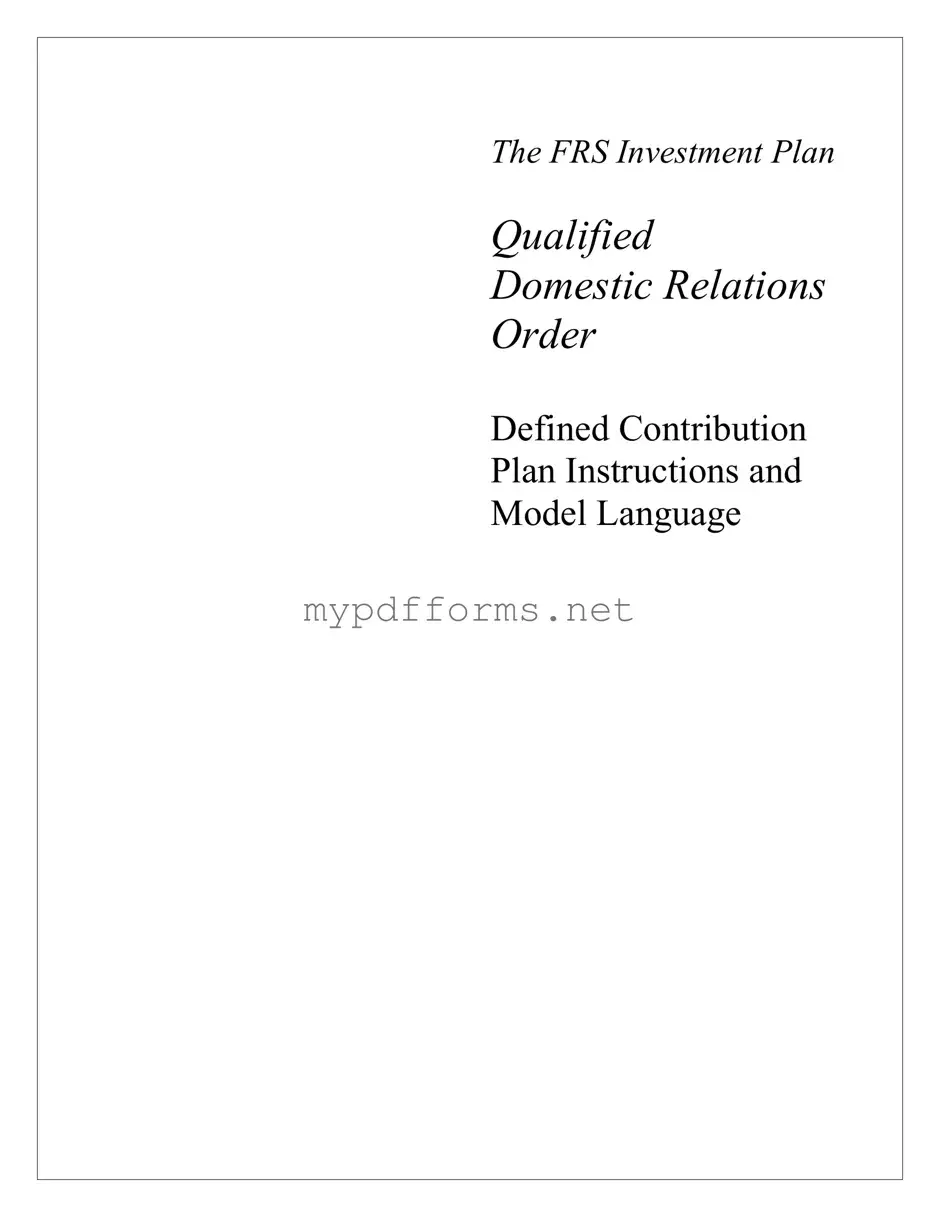The Qualified Domestic Relations Order (QDRO) is similar to a divorce decree. A divorce decree is a court order that officially ends a marriage and outlines the rights and responsibilities of both parties. Like a QDRO, it often includes provisions for the division of marital property, including retirement benefits. Both documents require careful drafting to ensure that the intentions of the parties are accurately reflected and legally enforceable.
An asset division agreement is another document that shares similarities with a QDRO. This agreement is a legal document that specifies how assets will be divided between spouses during a divorce. Similar to a QDRO, it addresses the distribution of retirement accounts and may need to be approved by a court. Both documents serve to protect the financial interests of each party and must comply with specific legal standards.
A marital settlement agreement also resembles a QDRO. This document is created during divorce proceedings and outlines the terms of the separation, including the division of assets and debts. Like a QDRO, it may include details about retirement benefits. Both require mutual agreement and must be submitted to the court for approval to ensure they are enforceable.
A property settlement agreement is akin to a QDRO as well. This type of agreement specifically focuses on the division of property and assets acquired during the marriage. While a QDRO addresses retirement benefits, a property settlement agreement can encompass a broader range of assets. Both documents aim to clarify ownership and responsibilities post-divorce.
A court order for spousal support shares some characteristics with a QDRO. This order outlines the financial support one spouse must provide to the other after separation. Like a QDRO, it is a legal document that must be approved by the court. Both orders are enforceable and can impact the financial well-being of the parties involved.
An IRS Form 1099-R is similar to a QDRO in that it deals with the distribution of retirement benefits. This form reports distributions from retirement plans and is crucial for tax purposes. While a QDRO facilitates the division of those benefits, the 1099-R provides the necessary tax information to both the member and the alternate payee. Both documents play important roles in the financial aspects of retirement benefits.
A retirement plan distribution form is another document that resembles a QDRO. This form is used to request the distribution of funds from a retirement account. Like a QDRO, it must be completed accurately to ensure that the funds are distributed according to the terms of the divorce. Both documents require careful attention to detail to avoid complications in the distribution process.
When considering various legal agreements related to asset division, it's also essential to evaluate the role of a Rental Contract, especially in situations involving properties and rental agreements amidst a divorce or separation. A Rental Contract outlines duties and rights, ensuring that both parties understand their obligations which can be crucial in managing shared resources during these transitions.
A beneficiary designation form is similar to a QDRO because it specifies who will receive benefits from a retirement account upon the account holder's death. Both documents are essential for ensuring that the correct parties receive the intended benefits. While a QDRO is focused on divorce proceedings, a beneficiary designation form addresses the distribution of benefits after death.
Finally, a court order for child support has similarities to a QDRO. This order mandates financial support for a child from one parent to another. Like a QDRO, it is a legally binding document that requires court approval. Both orders are designed to protect the financial interests of dependents, whether they are children or former spouses.
